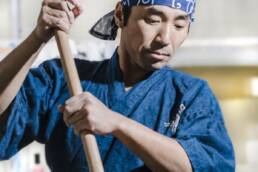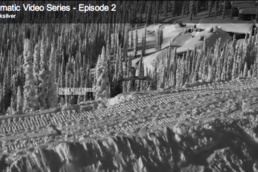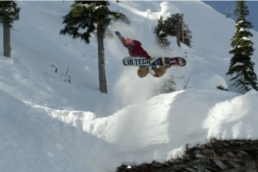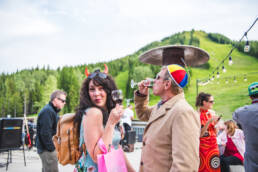New-school provisioners of Japan’s elixir extraordinaire are growing roots – and rice – from California to Vancouver. By Ryan Stuart.
Like a lot of people on this side of the Pacific, Elise Gee thought there was only one kind of sake: hot, jet fuel. Then 20 years ago she stumbled into a sake bar in New York City.
“There were pages and pages of sake to choose from,” she says. “Each one had its own flavour profile, just like wine, and most of it was served cold. By the end of that night, I had fallen in love with sake.”

Gee’s now a sake expert and writes about the traditional Japanese alcohol on her blog, eatnorth.com. In recent years, she’s watched interest in sake take off, with a dozen breweries open on this continent, mostly in the Pacific Northwest, and imports from Japan’s thousands of breweries growing. By some estimates, consumption here is growing by 15 percent, year over year.
“North Americans only knew of hot sake, mostly because restaurants chose what was readily available and cheap,” she says from her home in Vancouver, British Columbia. “Premium sake has only been around the last 45 years in Japan and really only the last 10 here.”
The difference between jet fuel and premium sake rests mostly in the rice. The cheap stuff uses sushi table rice. To make higher quality sake, brewers use sake-specific rice with its higher starch-to-protein content. Other nuances come from milling the rice, the type of yeast, the water and the fermenting, pasteurizing, aging and filtering processes. Good sake is typically served cold, tastes crisp and clean with hints of fruit, can be dry or sweet, cloudy or clear, and doesn’t burn on the way down.
Like wine grapes, terroir, or where the rice is grown, also impacts the flavour. Most micro-breweries here use table rice grown in California and premium production methods to create good quality sake. A couple use sake rice grown in Arkansas. And, for a hyper-local taste, Masa Shiroki, the founder of Osake, a sake maker on Vancouver’s Granville Island, is growing his own rice in the Fraser Valley.
He started as a sake importer, but he quickly realized that to make sake as appealing as wine, Japanese-made wasn’t going to cut it.
“Most sake is brewed to pair with Japanese food,” Shiroki says. “The flavours don’t quite pair with western food. I realized doing exactly what the Japanese sake makers do does not make sense.”
He started making his own sake in 2007 and growing his own sake rice in 2009. By 2015, he had enough rice to brew all Osake’s eight sake varieties, about 8,000 litres per year. Shiroki says his sakes pairs with everything from cheese to Tandori chicken.
That’s a trend Gee is seeing even in Japan, where a younger generation raised on western food is looking for more robust flavours.
“Sake is becoming more complex, bold and full bodied,” she says. “The variety is now more like the thousands of flavours of wine. It’s a really exciting time for sake lovers.”
Ryan Stuart
Ryan Stuart has been fascinated by the natural world since he was a kid, and he’s now sharing this interest through his freelance writing, which he does from Comox on Vancouver Island, British Columbia.
Related Stories
Travis Rice Slays Baldface
One of the world's best snowboarders, Travis Rice, recently spent a few days in the Kootenay woods, tapping trees and…
Five Full Runs – by Nate Smith
Watch this beautifully shot, ridiculously skied big-mountain session featuring Tanner Hall at Retallack Lodge. Shot…
Summer 05 – The Evolution of the Revolution
Rossland’s Red Teeth Wine Festival Returns June 28
Red Teeth, the Mountain Wine Festival hosted by Red Mountain Resort and the Josie Hotel, returns June 28 to July 1,…
The Waddington Divide Traverse – A Photo Gallery
This past Spring, four backcountry skiers travelled the Waddington Divide Traverse, from Bluff Lake (about 250km…








